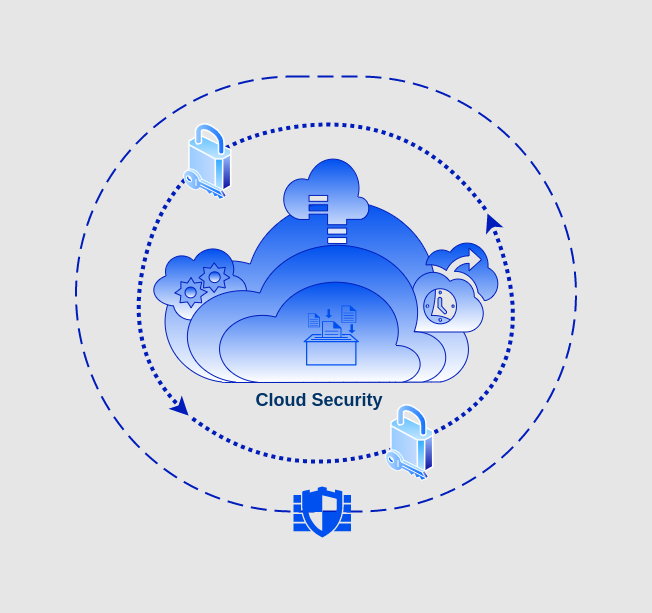In the past years, business and personal data were maintained locally. The data will be saved on enterprise servers and on the internal storage of the PC at home if we work for an organization.
The introduction of cloud technology has made everyone rethink their cyber security.
Data and applications may be shared across local and remote systems and are always accessible over the Internet. As a result, it will emphasize the importance of cloud security.
Let’s start with it. Cloud security is a set of security controls and access solutions designed to safeguard data in and out of the cloud.
Therefore, it refers to the techniques, technologies, policies, services, and procedures used to safeguard cloud environments and the sensitive data they contain against unethical practices.

What exactly does it protect?
The purpose of cloud security is to protect the following:
- Networking requires physical equipment such as routers and cabling.
- Computing software.
- Operating system.
- Apps.
- Hard drive.
- Hardware like PCs, smartphones, Internet of Things (IoT) devices, and also modems.
- Data and Data servers.
- Running Environments.
- Computer virtualization frameworks.
- All components from base infrastructure to smaller data such as emails and documents.
Why it is Important?
- We can centralize the company’s security architecture for better security.
- Aids in financial management by Minimizing capital expenditure.
- Besides that, increasing the use of automation reduces administrative tasks and the necessity for human resources.
- All components can be located and accessed remotely through web-based connections, from base infrastructure to smaller data such as emails and documents.
- We can develop new features and give access to as many users as we want without compromising security because of its scalability.
Challenges
- The public cloud environment provides a large attack surface for hackers who use inadequately secured cloud ports to gain access to and disrupt cloud workloads and data.
- Cloud providers have complete control over the infrastructure layer, which they do not share with their customers. Due to a lack of visibility and control, cloud users are usually unable to appropriately identify and determine their cloud assets or analyze their cloud environments.
- cloud assets are dynamically provisioned and deleted. In such a fluid and dynamic environment, traditional security systems are simply incapable of implementing protective measures.
- Cloud service providers can simply circumvent the security restrictions, allowing them to approach, access, and monitor personal information.
- Likewise, an employee with cloud access could exploit the situation, putting the organization at risk.
- A Cloud-native breach, defined as a series of cyber-attacks planned around a company’s flaws and vulnerabilities, appears to be very common. They simply transmit the data to their equipment without using malware to keep the process hidden.
Solutions
- Data Encryption is a technique for encrypting data so that only authorized parties may understand it. As a result, it is the best approach for sensitive data and interactions.
- Always use complex passwords consisting of letters, numbers, and unusual characters.
- Anyone can easily open the URLs if we don’t close the cloud storage bucket. Always remember to close the cloud storage bucket.
- Furthermore, always store data in the cloud with end-to-end encryption and modify the default settings to prevent hackers from gaining access through the front door.
- Only you should know the master passwords. Consider it your private space, which you must not share with anyone at any time.
- Similarly, always remember to regularly back up the data that has been uploaded to the cloud. It will aid in data recovery or restoration.
- Identity and access management (IAM) software keeps track of who a user is and what they’re allowed to do, granting or denying access to authorized individuals as needed. In cloud computing, identity and access management are essential.
- A cloud firewall offers another layer of security to cloud assets by blocking unauthorized online traffic. Cloud firewalls are virtual security barriers that are housed in the cloud and surrounding cloud infrastructure. Cloud firewalls prevent DDoS attacks, malicious bot activity, and vulnerability exploitation.
Conclusion
A cloud security strategy’s purpose is to minimize threat risks as much as possible by securing data, managing user authentication and access, and remaining operational in the event of an attack.
In case of any help or query, please contact us or raise a ticket.


Be the first to comment.